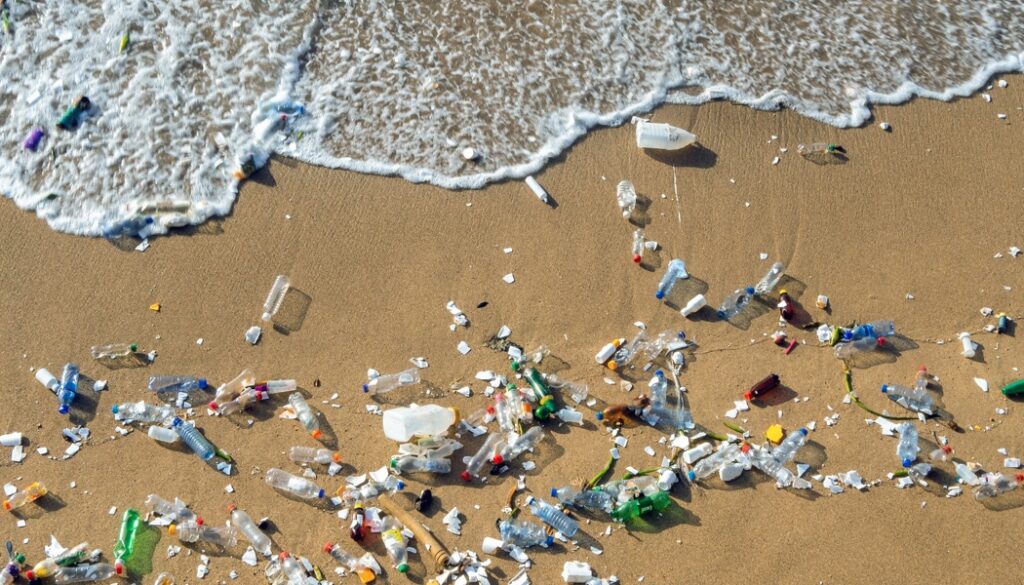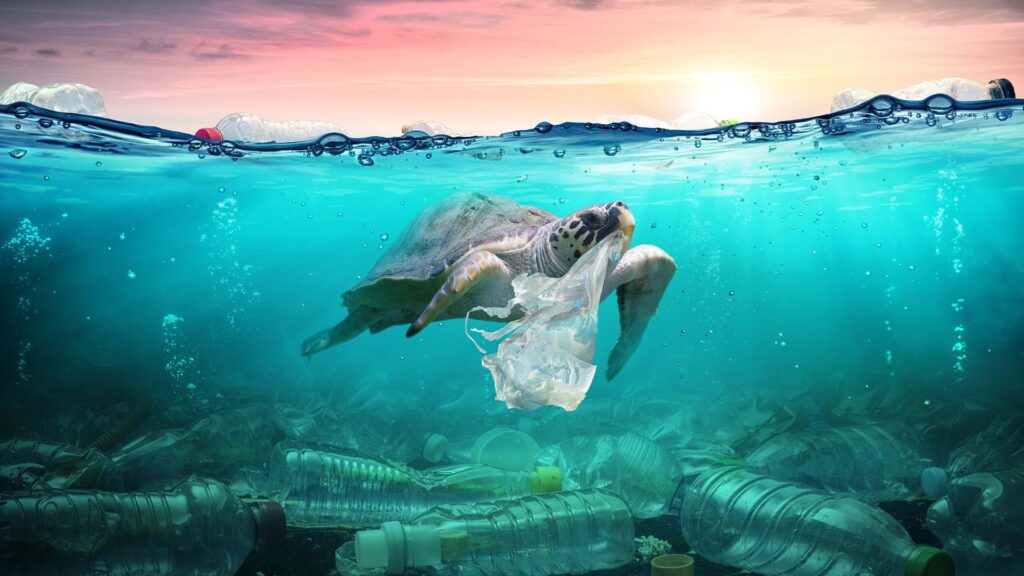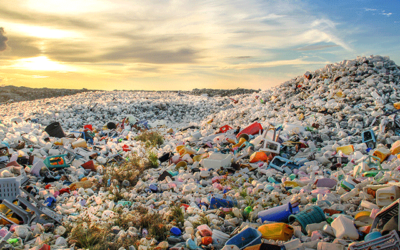Plastic pollution has emerged as a pressing global crisis, infiltrating every corner of our planet and posing a severe threat to both the environment and human health. This article delves into the intricate web of global trends surrounding plastic pollution and explores localized solutions to mitigate its devastating impact.
The Escalation of Plastic Consumption

Plastic consumption has skyrocketed in recent decades, driven by the convenience and versatility of this synthetic material. The proliferation of single-use plastics has become particularly alarming, contributing significantly to the surge in pollution. Many facilities like commercial buildings, hotels, or even hotel for dogs in Seattle banned using single-use plastics! From packaging materials to disposable cutlery, our reliance on plastic has led to an environmental predicament with far-reaching consequences. The sheer scale of plastic production and consumption demands urgent attention as we witness ecosystems suffocating under the weight of non-biodegradable waste.
Global Implications of Plastic Pollution
The ramifications of plastic pollution extend beyond visible litter, seeping into oceans, and rivers, and even infiltrating the air we breathe. Microplastics, minute particles resulting from the breakdown of larger plastic items, pervade water sources, jeopardizing marine life and compromising water quality. The far-reaching consequences of plastic pollution are not confined to aquatic environments; they manifest in terrestrial ecosystems, affecting wildlife and ecosystems on a global scale. Understanding the interconnectedness of these issues is crucial to formulating effective strategies for mitigation.
Innovative Technologies in Plastic Recycling
In the battle against plastic pollution, technological advancements play a pivotal role. Innovations in plastic recycling have the potential to revolutionize waste management systems and reduce the burden on the environment. These innovations are already being used in healthcare systems, clinics, and even at the kambo session in Austin TX. Emerging technologies, such as chemical recycling and pyrolysis, aim to break down plastic into its molecular components, paving the way for the creation of new, sustainable materials. However, widespread adoption of these technologies requires concerted efforts from governments, industries, and communities alike.
Community-Led Initiatives and Grassroots Movements
While global initiatives are indispensable, the power of local communities should not be underestimated. Grassroots movements and community-led initiatives are proving instrumental in the fight against plastic pollution. From beach clean-ups to educational programs, communities around the world are taking ownership of their environmental impact. Empowering individuals to make sustainable choices and advocating for responsible consumption are pivotal steps toward creating a groundswell of change.
Government Policies and Legislative Measures
Governments play a pivotal role in curbing plastic pollution through the formulation and enforcement of robust policies. From plastic bag bans to extended producer responsibility (EPR) frameworks, legislative measures are essential in reshaping consumption patterns and holding industries accountable for their environmental footprint. Collaborative efforts between governments, industries, and environmental organizations are imperative to create a regulatory landscape that fosters sustainable practices and prioritizes the planet’s well-being. Some companies like the one that does concrete cleaning in St. Augustine also help with plastic waste in their local communities.
Challenges and Opportunities for a Plastic-Free Future
Transitioning toward a plastic-free future is riddled with challenges, but it also presents unprecedented opportunities for innovation and sustainable development. Overcoming the inertia of established plastic-centric systems requires a multifaceted approach that addresses economic, social, and environmental dimensions. The shift toward biodegradable alternatives, circular economies, and eco-friendly packaging heralds a new era where responsible consumption is the cornerstone of progress.
The Role of Education in Plastic Waste Reduction
Education stands as a linchpin in the quest for sustainable living and plastic waste reduction. Empowering individuals with knowledge about the environmental impact of plastic consumption is pivotal in fostering responsible behaviors. Educational institutions, from primary schools to universities, can play a crucial role in shaping the mindset of future generations. Integrating environmental studies into curricula, organizing awareness campaigns, and encouraging research on sustainable practices create a foundation for a society that values and actively contributes to reducing plastic pollution. There are great conventions about this in Toronto. Besides that, you can find the best engine services in Toronto for your car if you need them.
Cultural Shifts and Behavioral Change

Beyond legislative measures and technological innovations, instigating a cultural shift is essential to tackle plastic pollution at its roots. Social norms often dictate consumption patterns, and altering these norms requires concerted efforts from influencers, media, and community leaders. Initiatives that celebrate and promote sustainable living can effectively reshape societal attitudes towards single-use plastics. By highlighting the connection between individual choices and environmental consequences, we can pave the way for a paradigm shift in how we perceive and interact with plastic products in our daily lives.
If this topic upsets you or triggers you, we recommend switching off for a bit and relaxing with one of your favorite romance novels, and then when you’re ready start researching more about this and how you can help as an individual!
Corporate Responsibility and Sustainable Practices
The corporate sector plays a pivotal role in the plastic pollution narrative, given its influence on production, distribution, and consumer behavior. Encouraging corporate responsibility and sustainable practices is paramount in mitigating the environmental impact of plastic. Companies can lead by example, adopting eco-friendly packaging, reducing plastic use in their operations, and investing in research for alternative materials. The spa in Toronto practices this eco-friendly approach by offering clients natural body care products. Consumers, in turn, can influence corporate practices through their purchasing power, demanding accountability and supporting businesses committed to environmentally friendly practices.
The Intersection of Climate Change and Plastic Pollution
As the world grapples with the impacts of climate change, the intersectionality of environmental issues becomes increasingly evident. Plastic pollution, while a distinct problem, is interconnected with broader climate concerns. The production and disposal of plastic contribute to greenhouse gas emissions, exacerbating climate change. Addressing plastic pollution in tandem with climate action presents an opportunity for synergistic solutions that address multiple environmental challenges concurrently.
A holistic approach that considers the interconnected nature of environmental issues is crucial for sustainable and impactful change. Activists often promote an ecological approach by presenting DIY projects that would make use of things that would otherwise be thrown away or by raising money for some projects by selling cookie dough edibles.
Innovative Waste Management Strategies
Effective waste management is indispensable in the battle against plastic pollution. Traditional waste disposal methods often fall short in handling the volume of plastic waste generated globally. Innovative waste management strategies, such as zero-waste initiatives, decentralized recycling centers, and waste-to-energy technologies, present viable alternatives. These approaches not only reduce the environmental burden of plastic waste but also contribute to the creation of sustainable, circular economies that prioritize resource efficiency and minimize environmental impact.
The Role of Technology in Monitoring and Prevention
Advancements in technology offer promising tools for monitoring and preventing plastic pollution. Satellite imagery, artificial intelligence, and machine learning can be harnessed to track the movement of plastic debris in oceans and identify areas of high pollution. The development of smart waste bins equipped with sensors can optimize waste collection routes and enhance efficiency in urban areas. Did you know that many agencies and NGOs started figuring out how millimeter wave products and new technology in general can contribute to their goal? Embracing technology as a proactive tool in the fight against plastic pollution can revolutionize our ability to monitor, prevent, and respond to environmental threats.
International Collaboration for a Plastic-Free Future
The global nature of plastic pollution necessitates collaborative efforts on an international scale. Countries, NGOs, and international organizations must work together to share knowledge, best practices, and resources. Establishing a framework for cross-border collaboration can enhance the effectiveness of plastic pollution mitigation strategies. Joint research initiatives, collaborative clean-up projects, and the exchange of technological innovations can accelerate progress toward a plastic-free future. Did you know that a misting system can help contribute to fresher and cleaner air, and all people should have it installed in their homes?
The Economics of Sustainable Practices
Transitioning to sustainable practices requires an examination of the economic aspects involved. While the initial investment in eco-friendly alternatives may seem daunting, the long-term economic benefits outweigh the costs. Sustainable practices can lead to reduced environmental damage, lower healthcare costs associated with plastic-related health issues, and the creation of new job opportunities in the green sector. Governments and businesses need to recognize the economic advantages of prioritizing sustainability and invest in a future where environmental well-being aligns with economic prosperity.
Social Media Activism and Online Movements
In the digital age, social media platforms have become powerful tools for activism and awareness. Very often one can come across posts in which activists wear men’s t-shirts with inscriptions that are supposed to encourage environmental awareness. Online movements dedicated to environmental causes, such as plastic pollution, have gained momentum, reaching a global audience. Social media activism can mobilize individuals, raise awareness, and hold corporations and governments accountable for their environmental impact. Hashtags, challenges, and viral campaigns have the potential to galvanize widespread action, turning online awareness into tangible, real-world change.
Empowering Indigenous Communities in Conservation Efforts
Indigenous communities often bear the brunt of environmental degradation, yet they also hold valuable traditional knowledge about sustainable practices. Empowering indigenous communities in conservation efforts can be a catalyst for effective and culturally sensitive solutions to plastic pollution. Collaborative initiatives that respect and integrate indigenous wisdom into environmental policies can create a harmonious approach that benefits both ecosystems and local communities.
Did you know that so many people end up at the Phoenix stem cell treatment center in need of treatment, caused by air pollution and toxic environment in general?
The Importance of Biodiversity in Plastic Pollution Mitigation

Preserving biodiversity is intrinsic to the health of ecosystems and, consequently, crucial in the fight against plastic pollution. Diverse ecosystems have a higher capacity to adapt and recover from environmental stressors, including plastic contamination. Protecting and restoring natural habitats, promoting conservation efforts, and ensuring the well-being of diverse species contribute to a resilient environment that can withstand and recover from the impacts of plastic pollution.
Closing the Loop: Circular Economy Models
Shifting from a linear economy to a circular one is fundamental to addressing the root causes of plastic pollution. Circular economy models prioritize resource efficiency, recycling, and the reduction of waste. By designing products with recyclability in mind, promoting the reuse of materials, and fostering a culture of responsible consumption, we can close the loop on plastic production and disposal. Governments, industries, and consumers all play vital roles in embracing and implementing circular economy principles.
Local Success Stories and Replicable Models
Highlighting success stories on a local level can inspire broader change and offer replicable models for other communities. The production of custom shopping bags from recyclable materials is an excellent example of the application of ecology in everyday life. Whether through innovative waste management programs, community-led initiatives, or sustainable business practices, these success stories demonstrate that tangible progress is possible. By showcasing diverse approaches and celebrating achievements, we can create a ripple effect that motivates individuals, communities, and governments to adopt similar strategies in their quest for a plastic-free future.
In conclusion, the battle against plastic pollution is a multi-faceted journey that requires collaboration, innovation, and sustained effort on a global scale. From educational initiatives and cultural shifts to technological advancements and international cooperation, each aspect plays a crucial role in shaping a sustainable future. By weaving these elements together into a comprehensive tapestry of solutions, we can overcome the challenges posed by plastic pollution and forge a path toward a healthier, more resilient planet for generations to come.

